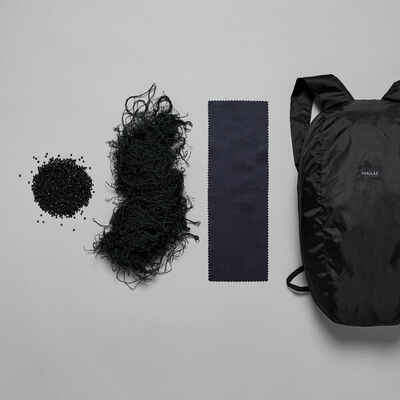Features of the 300 women's jacket
Compared with our 100 jacket, the 300 jacket:
- more waterproof (15,000 Schmerbers) and stretchy fabric
- rip-tab wrist fastening
- hood that stows in the collar and can be adjusted in depth
- additional outside breast pocket
Details below
Technical features of the component
Laminated fabric. Waterproof fabric: 15,000 Schmerbers
- Water-repellent fabric (water runs off the fabric)
- 100% taped seams, so that water does not leak through the seams
Collar and hood
The hood can be stored in the collar. The collar is then fastened with plastic press studs to prevent oxidation by salt.
Depth and height-adjustable hood: adjustable at the back of hood and on the collar.
The chin-high neck effectively protects the lower part of the face. 9 cm high collar (at the back)
Sleeve cuffs
The end of the sleeve is adjustable with a rip-tab. It lets you adjust the sleeve to your arm length, but also stops air and water coming in.
To remove the jacket more easily, fully open the rip-tab.
Front zip closure
Using a zip on the entire jacket length with an interior channel (flap) that protects against the wind and water.
Soft fabric flap on the top of the collar to protect the chin.
pockets
Two pockets on the front of the jacket, for your VHF, sail tie, cap, etc. Injection-moulded plastic zip to prevent salt oxidation
One inside chest pocket on the left side to store your phone or other items, fastened with a zip
One inside chest pocket on the right side fastened by a rip-tab
PLEASE NOTE: the pockets are NOT WATERPROOF
Waterproofing - the component of the 300 jacket
We measure a fabric's resistance to water pressure in mm of water column (JIS standard). The higher the water pressure withstood by the fabric, the more waterproof it is.
Here are the waterproofing ratings:
Component resistant to water pressure of 5,000 mm after ageing (five washes). This equates to 15,000 Schmerber (JIS standard), which is the average water pressure during a rain shower.
The anorak's waterproofness was tested in a rain shower with 60 litres of water/m²/hour for 2 hours.
Component Breathability
To find out whether a fabric is breathable, we test its evaporate resistance or RET (ISO 11092 standard). The lower the fabric's resistance, the more moisture is evaporated, and therefore the higher the fabric's breathability.
We consider that if:
RET < 9 = very breathable fabric
9 < RET < 12 = breathable fabric.
The Sailing 300 vest’s RET is 12.
Water-repellent properties information
A fabric is water-repellent when water slides off the surface of the fabric, without seeping in.
Your jacket does not become waterlogged and remains lightweight and breathable. The water-repellent properties are achieved with a treatment applied to the external side of the fabric, but in practice these properties can be altered.
The water-repellent properties can be reactivated by putting the jacket in a dryer for 10 minutes at the lowest temperature.
How to wash your jacket?
To maintain the water repellent properties, infrequent washing is recommended.
Close all the zips and flaps, empty the pockets and stow the hood in the collar. You can wash it on a synthetic cycle at 30°C or 40°C with your usual detergent. Do not use a conditioner, which may reduce the initial performance of the garment. Very important: choose a full rinse cycle or extra rinse.
How to reactivate the jacket's water repellency
Drying is a crucial phase in reactivating the water repellent treatment.
We recommend that you lay your jacket flat on a clothes rack and leave it out to dry in the open. Caution: never dry your jacket directly on a radiator.
Then place them in the tumble dryer on a short synthetics cycle, i.e. 10 to 15 minutes, before turning it back the right way round. Caution: do not over-dry the garment.
 Process
Process



